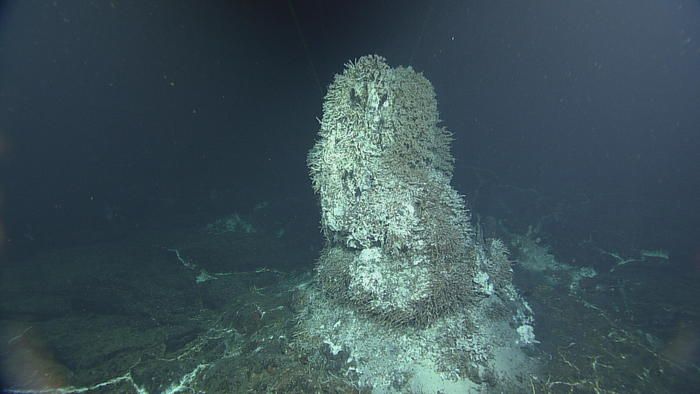
Explore an Underwater Volcano Live in HD

For decades, viewing the bizarre underwater ecosystems at seafloor hydrothermal vents has been the privilege of scientists shoehorned into submersibles or researchers steering diving robots.
Now, anyone online can watch live high-definition video of marine life at the Mushroom vent, a 12-foot-tall (4 meters) chimney sitting 5,000 feet (1,520 m) below the ocean's surface. The HD camera is part of a $239 million National Science Foundation project to install a permanent, cabled observatory at Axial Seamount, an underwater volcano located 250 miles (400 kilometers) offshore of Oregon at the Juan de Fuca Ridge. Other cabled sites along the West Coast seafloor will help scientists explore earthquakes, climate change and methane deposits. Watch the video online here: Interactive Oceans
The HD camera was turned on yesterday (Aug. 12) after installation by a remotely operated vehicle (ROV). The video first travels from the hydrothermal vent camera to the ROV over a 30-foot-long (9 m) cable, then up the ROV tether to a research ship, according to the project's website. From there, a satellite beams the signal to the University of Washington, which posts the video online. Plans call for the video to be directly transmitted online next year through a seafloor fiber optic cable.
"This is an amazing feat," the team wrote on their daily log.
Axial Seamount is an active volcano with a history of underwater eruptions. In 2011, a research expedition received an unexpected surprise when scientists discovered the landscape transformed by new lava flows. [Video: New Vent Opens at Axial Underwater Volcano]
The Mushroom vent is part of a hydrothermal vent field scattered with chimneys streaming sulfide-rich fluids. Tubeworms, limpets and crabs cluster on the tall structures. The ecosystem depends on chemosynthetic bacteria that eat the minerals in the hydrothermal fluids.
Email Becky Oskin or follow her @beckyoskin. Follow us @OAPlanet, Facebook & Google+. Original article on LiveScience's OurAmazingPlanet.
Sign up for the Live Science daily newsletter now
Get the world’s most fascinating discoveries delivered straight to your inbox.












